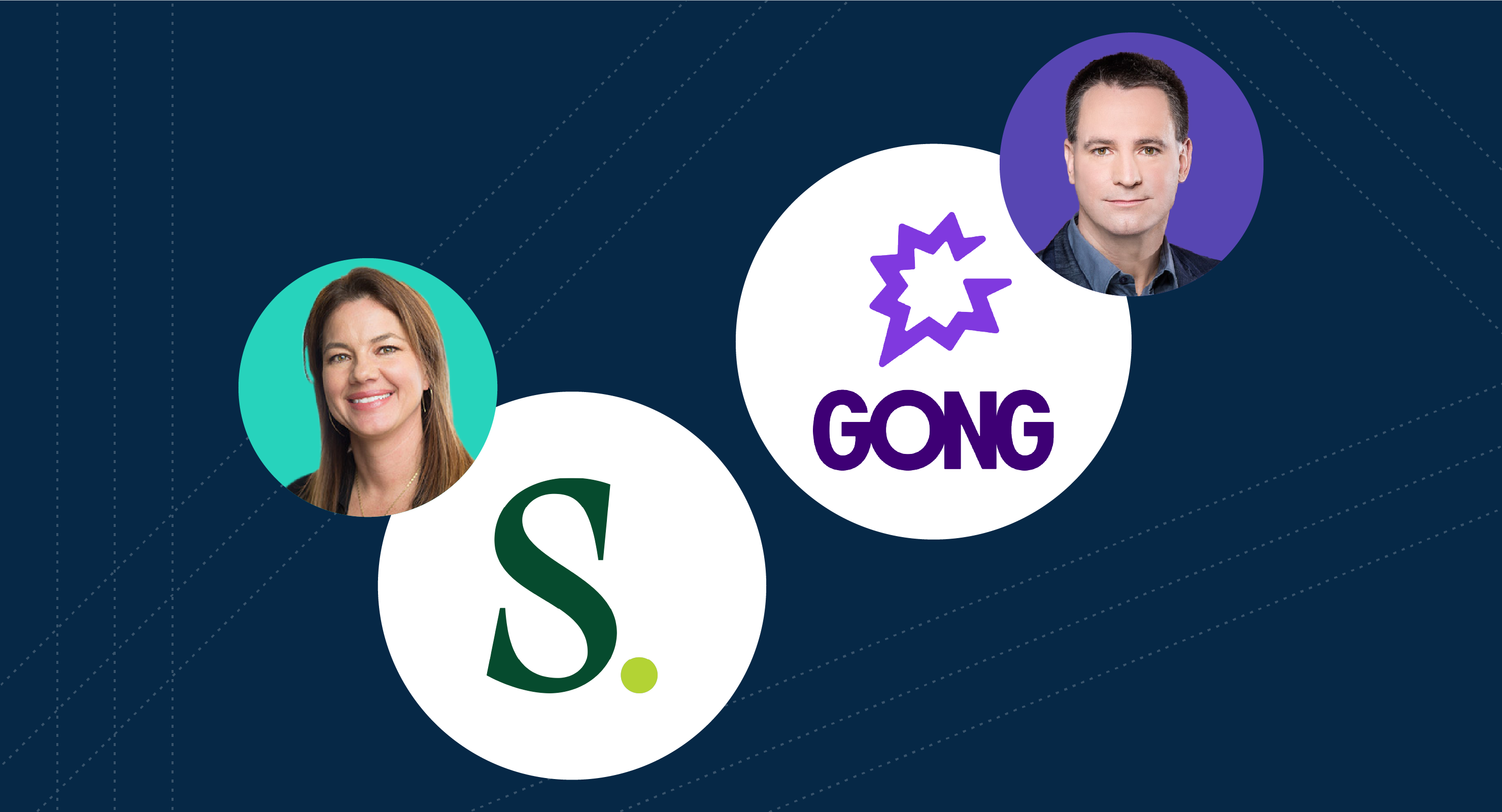CMO Insights: How to Go from Market Disruptor to Category Leader
We recently had the pleasure of hosting our CMO Consult webinar, where I was joined by Udi Ledergor, Gong CMO, and Sydney Sloan, former CMO at Salesloft. Both companies have been named to G2's Best Software 2022 lists, based on verified reviews from real users coupled with impressive market presence. With marketing leadership experience at some of the top B2B software companies, Udi and Sydney know a thing or two about disrupting established markets and how to rise to the top of their categories.
Choose Software Category Disruption Over CreationWe've all heard software vendors say they're the ONLY one in their market. They create a whole new category that doesn't exist. While that could certainly be true, more often than not there is a category they belong to.
Sydney argues that you should always think first about the purpose of your category and, more importantly, whether you should actually create one. Don't rush into this first option, as it is a long, arduous and expensive process. There are many other ways to conquer a market, such as disrupting a category that already exists. She says education should be a top priority for organizations, providing a vision of what the market can be – which can be far beyond what your product offers today. Udi also cautions against creating categories, noting that there are often easier ways to win most markets. It's not something we all have to do.
As an example (and of course, to indulge us a bit), at G2, we've shaken up the way software category creation is done. We are not a traditional analyst firm that is fee-based and based on individual analyst opinions, which can be biased and outdated. We base everything we do on authentic, verified, real-time peer reviews that allow organizations to understand the end-user perspective.
How to properly create a category, when it makes senseIf you do decide to create a category, however, it's important to have customer champions, analysts, and experts who cover your "category" in the way you want, and to have someone else in your space (competitors!) to make sure it's a viable category.
Despite Udi's caution, he has some experience here. At Gong, they first found a similar category – conversational intelligence – which served the company well for about three years. Then two issues arose, creating the need for a new category: 1) they outgrew the category and 2) their product offering at the time was more extensive than anything seen on the market.
Gong also wanted to hold the attention of senior sales managers, especially in enterprises, when talking to them about conversational intelligence. To determine the appropriate category and the way forward, Gong hired someone to focus specifically on category design and amplification.
They landed on "Revenue Intelligence". Of course, it's a risk to launch something new, but when done right, you reap the benefits in the long run. The drastic increase in “Revenue Intelligence” search volume is just one indicator of the success of the category. Gong's competitors have changed their product language and messaging to also be around this terminology.
Obviously, they timed their shot well, and the timing...sometimes that's it. Take Google for example, which wasn't the first search engine, but saw what everyone else was doing and just did it better. Marketers can sometimes focus too much on newness, and there is an advantage to being a pioneer – but being a pioneer at the right time is more important.
Advance your strategy with insights provided by customersWhether you're joining, disrupting, or creating a category, you want to lead it. And, tapping into the voice of the customer — having a pulse on their feelings at all times — is a crucial part of every B2B marketer's strategy to get there.
Sydney believes representing the voice of the customer and understanding the customer journey is the primary role of marketing. A first step she took at Salesloft was to start with the customer journey and then map the marketing strategy around that – aligning all functions to serve customers. Each G2 notice has been read. They even created a Slack channel dedicated to reviews. Salesloft then integrated this into the way it marketed, for example, by offering customer quotes...

We recently had the pleasure of hosting our CMO Consult webinar, where I was joined by Udi Ledergor, Gong CMO, and Sydney Sloan, former CMO at Salesloft. Both companies have been named to G2's Best Software 2022 lists, based on verified reviews from real users coupled with impressive market presence. With marketing leadership experience at some of the top B2B software companies, Udi and Sydney know a thing or two about disrupting established markets and how to rise to the top of their categories.
Choose Software Category Disruption Over CreationWe've all heard software vendors say they're the ONLY one in their market. They create a whole new category that doesn't exist. While that could certainly be true, more often than not there is a category they belong to.
Sydney argues that you should always think first about the purpose of your category and, more importantly, whether you should actually create one. Don't rush into this first option, as it is a long, arduous and expensive process. There are many other ways to conquer a market, such as disrupting a category that already exists. She says education should be a top priority for organizations, providing a vision of what the market can be – which can be far beyond what your product offers today. Udi also cautions against creating categories, noting that there are often easier ways to win most markets. It's not something we all have to do.
As an example (and of course, to indulge us a bit), at G2, we've shaken up the way software category creation is done. We are not a traditional analyst firm that is fee-based and based on individual analyst opinions, which can be biased and outdated. We base everything we do on authentic, verified, real-time peer reviews that allow organizations to understand the end-user perspective.
How to properly create a category, when it makes senseIf you do decide to create a category, however, it's important to have customer champions, analysts, and experts who cover your "category" in the way you want, and to have someone else in your space (competitors!) to make sure it's a viable category.
Despite Udi's caution, he has some experience here. At Gong, they first found a similar category – conversational intelligence – which served the company well for about three years. Then two issues arose, creating the need for a new category: 1) they outgrew the category and 2) their product offering at the time was more extensive than anything seen on the market.
Gong also wanted to hold the attention of senior sales managers, especially in enterprises, when talking to them about conversational intelligence. To determine the appropriate category and the way forward, Gong hired someone to focus specifically on category design and amplification.
They landed on "Revenue Intelligence". Of course, it's a risk to launch something new, but when done right, you reap the benefits in the long run. The drastic increase in “Revenue Intelligence” search volume is just one indicator of the success of the category. Gong's competitors have changed their product language and messaging to also be around this terminology.
Obviously, they timed their shot well, and the timing...sometimes that's it. Take Google for example, which wasn't the first search engine, but saw what everyone else was doing and just did it better. Marketers can sometimes focus too much on newness, and there is an advantage to being a pioneer – but being a pioneer at the right time is more important.
Advance your strategy with insights provided by customersWhether you're joining, disrupting, or creating a category, you want to lead it. And, tapping into the voice of the customer — having a pulse on their feelings at all times — is a crucial part of every B2B marketer's strategy to get there.
Sydney believes representing the voice of the customer and understanding the customer journey is the primary role of marketing. A first step she took at Salesloft was to start with the customer journey and then map the marketing strategy around that – aligning all functions to serve customers. Each G2 notice has been read. They even created a Slack channel dedicated to reviews. Salesloft then integrated this into the way it marketed, for example, by offering customer quotes...
What's Your Reaction?











![Compensation for travel time for hourly employees [Guide 2023]](https://joinhomebase.com/wp-content/uploads/2023/06/lEsIc_u1-scaled.jpeg)



![Three of ID's top PR executives quit ad firm Powerhouse [EXCLUSIVE]](https://variety.com/wp-content/uploads/2023/02/ID-PR-Logo.jpg?#)







